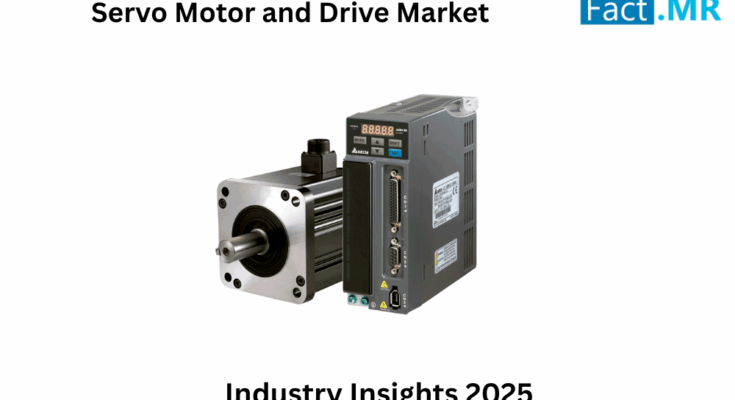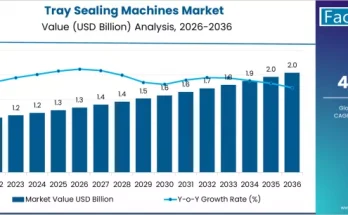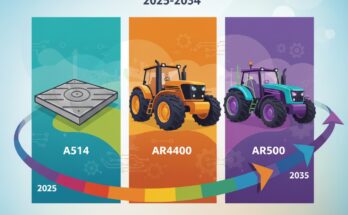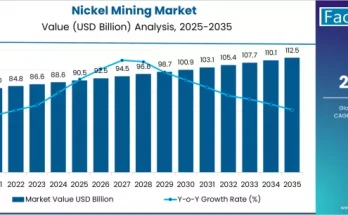The global Servo Motor and Drive Market is entering a phase of rapid expansion. Valued at about US$ 18.62 billion in 2024, the market is forecast to grow at a compound annual growth rate (CAGR) of 8.2% and reach approximately US$ 40.94 billion by 2034. This growth is being driven by rising demand for high-precision motion control in robotics, industrial automation, and smart manufacturing, combined with regulatory pressure for energy-efficient systems, improving drive technology, and expanding adoption of multi-axis systems in sectors ranging from automotive to medical devices.
Growth Drivers & Technological Trends
Several converging trends are fueling this growth trajectory. Industrial automation remains the bedrock: factories and production lines increasingly demand servo systems to enhance precision, throughput, and repeatability. Robotics applications, particularly in automotive assembly, pick-and-place machinery, CNC machines, and packaging, are amplifying demand. At the same time, energy efficiency and sustainability regulations are pushing manufacturers to upgrade older systems with more efficient servo motors and drives.
Technological innovation is also central. Advances in feedback sensors, control circuits, cooling systems, and materials (including rare earth magnets and high-precision encoders) are improving performance, lifespan, and power density. Integration with digital systems—IoT, AI, real-time analytics—permits better monitoring, predictive maintenance, and adaptive control. In multi-axis systems, these improvements reduce synchronization delays and enhance motion smoothness.
Market Segmentation & Leading Applications
The market breaks down by product types (linear vs rotary/AC/DC motors), single vs multi-axis systems, voltage class (low, medium, high), and by application. Linear & rotary servo motors together represent a large share, with linear servo motors especially growing fastest due to their precision in high-speed applications such as semiconductor and electronics industry. In 2024, linear + rotary motor types are estimated to account for around half of global value.
Robotics is a major application—about 25% share of the total in 2024—and expected to continue being one of the fastest growing segments. Other significant uses include CNC machining, industrial machinery, food & beverage processing equipment, automated packaging, medical devices, and any motion-control scenario where precision, speed, and repeatability are needed.
Regional Insights: United States & Asia-Pacific
United States
The U.S. servo motor and drive market is projected to grow at a CAGR slightly above the global average—about 8.8% over 2024-2034. Demand is being driven by high automation adoption in manufacturing, strict energy efficiency regulations, and emphasis on Industry 4.0 technologies. Sectors such as automotive, electronics, and medical devices are large users. U.S.-based manufacturers are investing in improved control electronics, smarter drives, and better feedback systems to meet domestic demand as well as export.
China / Asia-Pacific
China is one of the largest and fastest-growing markets. In 2024, China’s portion of the servo motor & drive market is valued in the multi-billion USD range, and it is expected to nearly double by 2034, reaching close to US$ 9.95 billion in that region alone. Industries there—from electronics manufacturing, robotics, consumer goods, to automotive—are major adopters. Government policies supporting automation, subsidies, and infrastructure investments increase the pace. Asia-Pacific overall contributes a large share (often cited as ~40-45% of global demand) and is forecast to maintain strong growth.
Competitive Landscape & Key Players
The market is populated by a mix of global incumbents and specialist manufacturers. Recognizable leaders include Siemens AG, Panasonic Corporation, Nidec Motor Corporation, Parker Hannifin, Mitsubishi Electric, ABB, Schneider Electric, Fanuc, Hitachi, Delta Electronics, among others. These players compete on precision, reliability, energy efficiency, product breadth, and integration capabilities. Firms are also investing in modular, scalable platforms, ensuring their servo drives can support different feedback systems, communication protocols (EtherCAT, Industrial Ethernet etc.), and rugged operation under varying environmental conditions.
Partnerships, acquisitions, and R&D investment are active. Companies are building capabilities in high-voltage and medium-voltage servo systems, enhanced digital control, and sustainable materials. Investments in manufacturing scale and improved supply chains (for magnets, power electronics) are also differentiators in this competitive field.
Challenges & Restraints
Despite strong momentum, there are hurdles. High upfront costs remain a barrier, especially for small and medium-size manufacturers or regions with lower capital access. Ensuring consistent and reliable feedback and control components under high load or harsh conditions is technically demanding. Energy efficiency regulations vary by region, adding complexity for global suppliers. Another challenge is supply chain constraints, especially for rare earth materials used in high performance motors, and for specialized electronics. Maintenance, calibration, and technical support for multi-axis systems can also add to total cost of ownership, possibly slowing adoption in cost-sensitive sectors.
Market Forecast & Strategic Implications
From 2024 to 2034, the servo motor and drive market is expected to approximately double in value. In the earlier part of this decade, growth will be fueled by retrofit and replacement of older systems, expansion of robotics, automotive electrification, and investments in electronics and semiconductor manufacturing. In the latter half, acceleration is likely to come from fully integrated motion control solutions, energy-efficient servo platforms, increased adoption in non-traditional sectors (e.g. agriculture, medical devices, renewable energy), and stronger demand for multi-axis systems supporting high precision tasks.
For players in this market, strategic priorities should include:
-
R&D in power efficiency, improved feedback and control systems, high durability under varied environmental conditions.
-
Strengthening regional manufacturing and supply chain resilience—local production or assembly for key parts, securing rare earth or magnetic materials supply.
-
Expanding offerings in digital and smart control—IoT-enabled drives, predictive maintenance, integrated sensors.
-
Targeting growth in emerging markets, particularly Asia-Pacific, Latin America and parts of Eastern Europe, where automation is rising from lower bases.
-
Aligning product portfolios to regulatory standards for energy efficiency, safety, and environmental sustainability.
Browse Full Report: https://www.factmr.com/report/servo-motor-and-drive-market
Conclusion
The Servo Motor and Drive Market is at a pivotal moment—its growth is not just about expanding volume, but about improving precision, integrating digital intelligence, reducing environmental footprint, and enabling new use-cases. As automation spreads deeper into industries and motion control becomes ever more exacting, servo systems will increasingly be central to production strategy and competitive differentiation. Market leaders will be those who combine engineering excellence, cost efficiency, regulatory compliance, and strong regional positioning.



